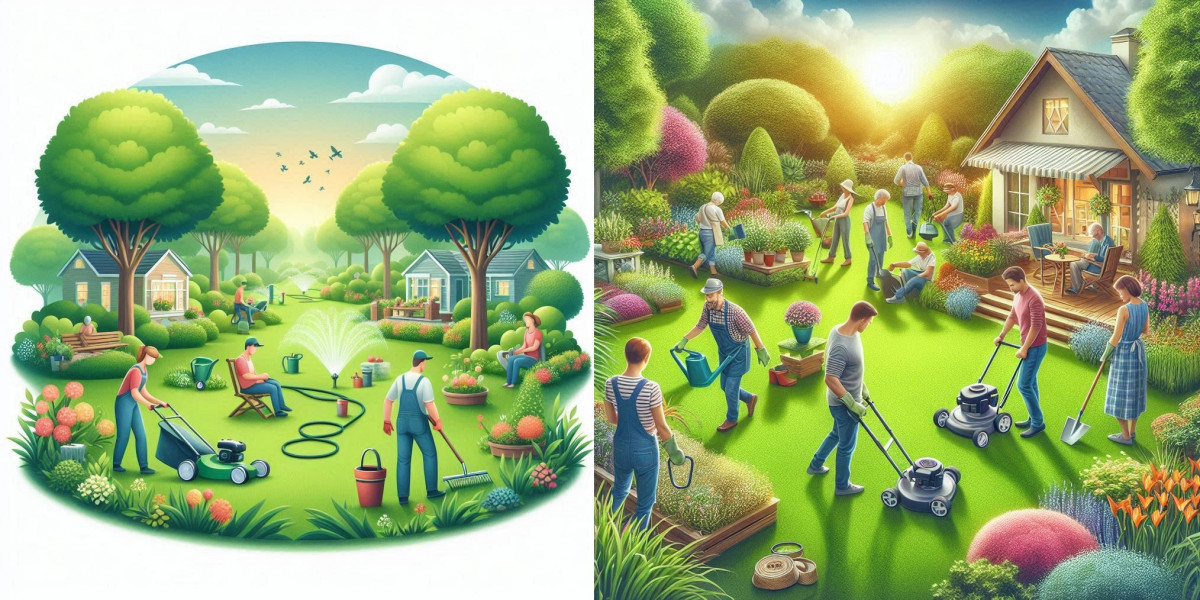Maintaining a lush and vibrant lawn is a dream for many homeowners. A well-kept yard not only enhances your property’s curb appeal but also increases its value. Understanding the essentials of lawn care can make this dream a reality. This guide explores key strategies, tools, and techniques that will help you cultivate a beautiful lawn while ensuring it remains healthy throughout the year.
Understanding Your Lawn
Before diving into specific care techniques, it's crucial to understand the unique characteristics of your lawn. Factors such as grass type, climate, and soil condition play a significant role in determining the best care practices. Identifying your grass type—whether it’s cool-season or warm-season—will guide your approach to watering, fertilizing, and mowing.
Cool-season grasses, like Kentucky bluegrass, thrive in the northern regions and grow best in spring and fall. In contrast, warm-season grasses, such as Bermuda and zoysia, flourish in southern climates, reaching their peak during the hot summer months. Understanding these distinctions is the first step toward a successful lawn care routine.
Essential Lawn Care Tools for Homeowners
Equipping yourself with the right tools is vital for effective lawn maintenance. Investing in quality tools not only makes the job easier but also ensures you achieve professional results. Basic equipment should include a reliable lawn mower, a sturdy rake, a hand trowel, and a good pair of gardening gloves.
For larger properties, consider a riding mower or a lawn tractor to cover more ground efficiently. When selecting your tools, prioritize durability and ease of use, as this will enhance your overall lawn care experience.
In addition to the basics, specialized tools like aerators, dethatchers, and seed spreaders can significantly improve lawn health. Aerators help alleviate soil compaction, allowing air, water, and nutrients to penetrate deeper. Dethatching removes excess thatch buildup, while seed spreaders ensure even distribution of grass seed or fertilizer.
Watering Your Lawn
Watering is one of the most critical aspects of lawn care. A common mistake homeowners make is watering too frequently or at the wrong times. Early morning is the best time to water, as it reduces evaporation and allows the grass to absorb moisture before the heat of the day.
The general rule of thumb is to provide about one inch of water per week, including rainfall. To determine how much water your lawn is receiving, consider using a rain gauge or placing small containers around the yard to measure water accumulation. Deep, infrequent watering encourages root growth, making your lawn more resilient to drought conditions.
Fertilizing for a Thriving Lawn
Fertilization is essential for maintaining a healthy lawn. Grass requires nutrients to grow strong and vibrant. A balanced fertilizer will contain the three primary nutrients: nitrogen, phosphorus, and potassium. The ideal ratio depends on your grass type and soil condition.
Testing your soil is an important step before fertilizing. Soil tests reveal nutrient deficiencies and pH levels, allowing you to tailor your fertilization strategy. Organic fertilizers are an excellent choice for eco-conscious homeowners, providing slow-release nutrients and improving soil health over time.
Timing is also crucial when it comes to fertilization. For cool-season grasses, apply fertilizer in early spring and fall, while warm-season grasses benefit from fertilization in late spring and summer. This ensures your lawn receives nutrients when it needs them most.
Mowing Techniques for a Healthy Lawn
Mowing is not merely about keeping your grass short; it plays a significant role in promoting lawn health. The height at which you mow can impact your lawn's growth and resilience. Generally, a height of around three inches is ideal for most grass types. Taller grass provides shade to the soil, helping retain moisture and preventing weed growth.
Regular mowing also encourages denser growth. Aim to mow regularly, but avoid cutting more than one-third of the grass height at once. This practice minimizes stress on the plants and promotes a lush, green appearance. Be sure to keep your mower blades sharp to ensure clean cuts, reducing the risk of disease.
Weed Control Strategies
Weeds can quickly turn a beautiful lawn into an eyesore. Effective weed control starts with prevention. A thick, healthy lawn is your best defense against weeds, as it leaves little room for unwanted plants to take root. Regular mowing, proper watering, and fertilization all contribute to a robust lawn.
When weeds do appear, it’s essential to address them promptly. Hand-pulling is effective for small infestations, while targeted herbicides can control larger populations. Always read labels carefully to ensure you’re using products safely and effectively. Organic herbicides are available for those who prefer a more environmentally friendly approach.
Aeration and Dethatching
Aeration and dethatching are crucial practices that can significantly improve lawn health. Aeration involves perforating the soil with holes to allow air, water, and nutrients to penetrate deeper. This practice is particularly beneficial for lawns that experience heavy foot traffic or have compacted soil.
Dethatching involves removing the layer of thatch, a mix of dead grass and organic matter that can accumulate on the soil surface. While some thatch is beneficial, excessive buildup can suffocate your grass and lead to pest problems. Both aeration and dethatching are best performed during the growing season, ensuring your lawn can recover quickly.
Seasonal Lawn Care
Seasonal changes require adjustments to your lawn care routine. In spring, focus on revitalizing your lawn after winter dormancy. This includes raking debris, aerating, and fertilizing. Summer care involves regular mowing and vigilant watering to prevent drought stress.
As autumn approaches, it’s time to prepare for winter. Fall is an excellent time for overseeding, as it allows new grass to establish before the cold sets in. Fertilizing in fall helps strengthen roots, making your lawn more resilient when spring arrives.
In winter, while many homeowners think lawn care comes to a halt, there are still tasks to consider. Keep the lawn clear of debris and avoid heavy traffic on frozen grass to prevent damage.
Lawn Care and Environmental Sustainability
Sustainable lawn care practices benefit not only your lawn but also the environment. Reducing chemical use, conserving water, and promoting biodiversity are all steps toward a healthier ecosystem. Consider incorporating native plants and flowers into your landscape design, as they require less maintenance and support local wildlife.
Utilizing mulch around garden beds can help retain moisture and suppress weeds. Composting grass clippings and other yard waste is another sustainable practice that enriches your soil naturally, reducing the need for synthetic fertilizers.
Conclusion
A beautiful lawn is achievable with dedication and the right knowledge. By understanding the unique needs of your grass type, investing in essential lawn care tools, and implementing best practices in watering, fertilizing, and mowing, you can cultivate a thriving outdoor space.
Embrace the journey of lawn care and enjoy the benefits of a vibrant, healthy yard. For further information on lawn care essentials, you can explore resources like Essential Lawn Care. Enhancing your lawn maintenance skills not only beautifies your property but also contributes positively to your community and the environment. Take the first step today toward a more lush and inviting landscape.

.jpg)
.jpg)
.jpg)







